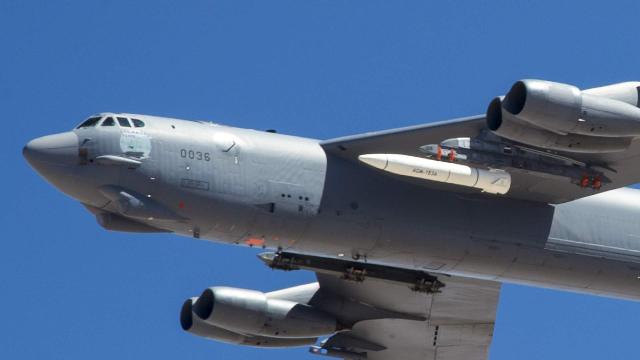Will the Americans be able to compete with Russia in this race
The US Air Force conducted a test launch of the AGM-183A hypersonic missile on March 17. It was carried out from a B-52H carrier aircraft over the Pacific Ocean. The Pentagon does not announce its outcome, but it cannot be excluded that this launch of the AGM-183A will be the last. The fact is that the ARRW program, under which the missile is being developed, has not received funding in the Pentagon budget for 2024. This is the second American air–to-ground hypersonic missile project that has failed. Whether overseas, desperate, they can curtail work on similar systems for the Air Force, Izvestia investigated.
A failed program
The carrier aircraft of the AGM-183A rocket launched not from the territory of the United States, but from the military air base on the island of Guam in the Pacific Ocean. The tests were provided by air observers of the American Missile Defense Agency and special ships. After flying 4 thousand km, the carrier launched a hypersonic missile at the Ronald Reagan test site, which is also located in the Pacific Ocean in the Marshall Islands.
It is clear that such a test plan could be aimed at demonstrating the capabilities of the US Air Force to strike thousands of kilometers from bases, at transoceanic distances, using missiles and in the immediate vicinity of Chinese territory. In the event of a possible conflict, it is precisely such scenarios of missile strikes that will be worked out by American long-range bombers.
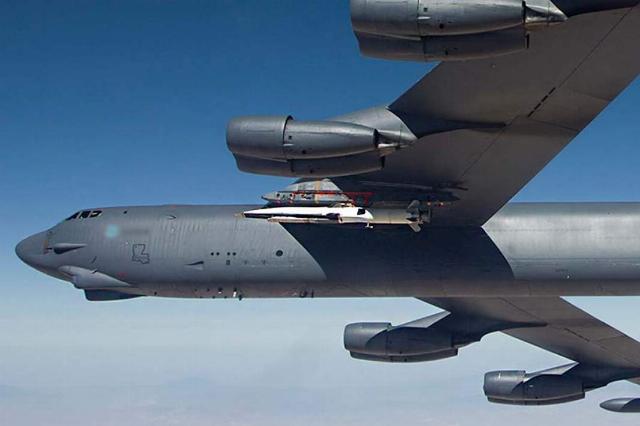
White AGM-183A missiles on the B-52H carrier aircraft
Image source: Photo: TASS/AVASA
In general, the AGM-183A missile test program is hardly successful. The current launch was supposed to take place on March 4, but it was canceled when all the test escort aircraft were already in the air. The reasons have not been announced, but they are likely to be of a technical nature. In 2021-2023, several test launches also failed — the main engine did not start, then there were failures in data transmission systems, then other malfunctions were detected. In successful launches, the rocket accelerated to five speeds of sound, which is actually only the lower limit of hypersound.
The program to create a 20-flywheel ARRW missile (from the English Air-Launched Rapid Response Weapon — air—based rapid response weapon) with a planning wedge-shaped combat unit several years ago replaced the closed HCSW program (from the English Hypersonic Conventional Strike Weapon - hypersonic non-nuclear strike weapon). Within its framework, Lockheed planned to create missiles with a range of 1.6 thousand km, which can be carried by B-1B, B-52H and even F-15EX aircraft. A non-nuclear strike means that it can be used in low-intensity conflicts, but in the future such a missile, of course, can be equipped with a nuclear warhead.
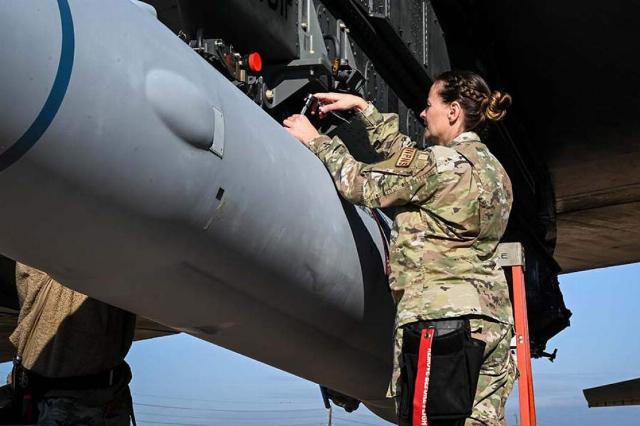
Photo: TASS/AVASA
Image source: iz.ru
If successfully developed, the AGM-183A could be effectively used against air defense and missile defense systems, since deflecting attacks from missiles maneuvering at a speed of 20 M is an extremely difficult task for modern defensive systems. But after clearing the territory of air defense systems, drones, fifth-generation aircraft and less high-speed, but more deadly cruise missiles can enter the gap.
B-52H strategic bombers could carry a fairly large number of AGM-183A both on internal drum launchers and under the wing. The weight of one is about 3 tons, which means that a heavy carrier aircraft can take a dozen of such products under its wing. The lighter F-15E can carry 2-3 products, which allows for flexibility and wide coverage of the geography of application, and in the future will allow for the export of non-nuclear hypersound.
But the main problem with the ARRW program is that it did not receive funding in the Pentagon budget for 2024. That is, in fact, it turns out that this program is closed, and the launch on March 17 was probably the last. And this is the second project of hypersonic air–to-ground missiles that has failed. The main reason is the difficulty of creating products with the required characteristics. Can work on hypersonic systems be curtailed overseas in desperation?
Development difficulties
It is unlikely that the failure of the ARRW program will lead to the cessation of the development of air-launched missiles with high hypersonic speeds. The fact is that in the United States, the air force has a large fleet of carrier strike aircraft that cannot be left without means of hitting particularly important and protected targets.
The U.S. long-range aviation alone will have four aircraft in the coming years: the B-52H, B-1B, B-2 and the new B-21. Next are the multi-purpose F-15EX and F-35, which are also supposed to carry strike weapons. In total, several hundred potential carriers are obtained, which, in the event of a high-intensity conflict with a strong and advanced enemy, must be equipped with thousands of hypersonic products. This is an urgent need for the US Air Force.
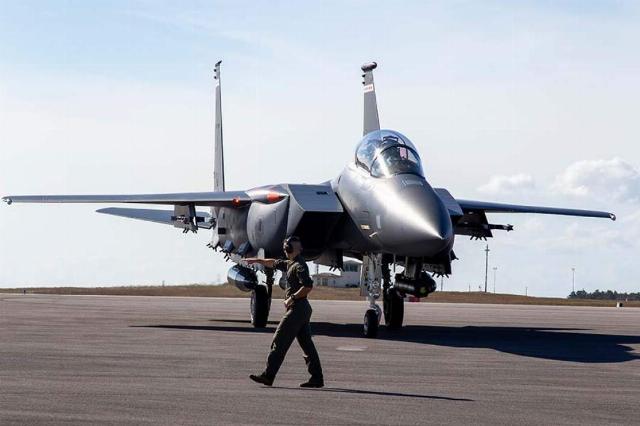
The F-15EX fighter jet of the United States Air Force
Image source: Photo: TASS/Zuma
And therefore, most likely, some new program will take the place of ARRW, which will use the developments on AGM-183A. Or something completely new will be created to arm strategic bombers - for example, the American equivalent of the Russian Dagger. Technologically, this task may turn out to be more realistic than creating a unique promising ARRW missile with a gliding hypersonic warhead.
But the United States has other programs to create hypersonic air-launched missiles. For use with the F-15E fighter-bomber, a smaller and less high-speed (seven speeds of sound) HACM product with a ramjet engine is being created. The Pentagon signed a contract for its creation with Raytheon in 2022, and starting in 2023, this is the only hypersonic project of the US Air Force that received funding, including for 2024. Yes, such hypersound is not 20 M, but it is better than nothing, and again with the possibility of placement on a wide range of media.
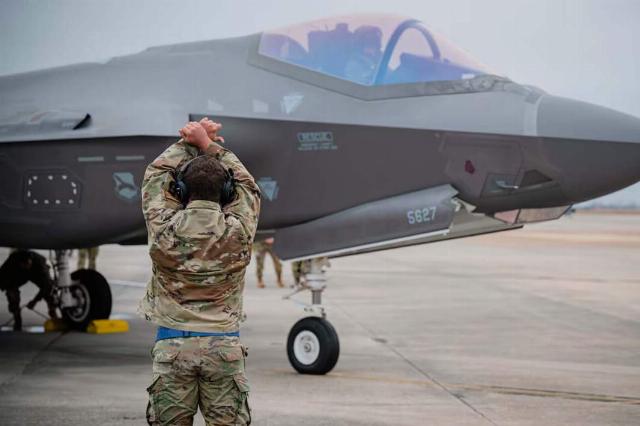
Photo: U.S. Air Force
Image source: iz.ru
In any case, it will take at least three to four years before hypersonic missiles enter service with the US Air Force. Moreover, regardless of whether the work on the AGM-183A will be completely stopped or the rocket will find its "reincarnation" in some new project. The missiles have not yet been created, have not been tested, it takes time to refine them and create new samples, and with modern high-tech technology it does not work instantly. And yes, the main competitor of the United States in hypersonic, Russia, has already gone very far ahead and the United States is in the position of catching up here.
Dmitry Kornev
